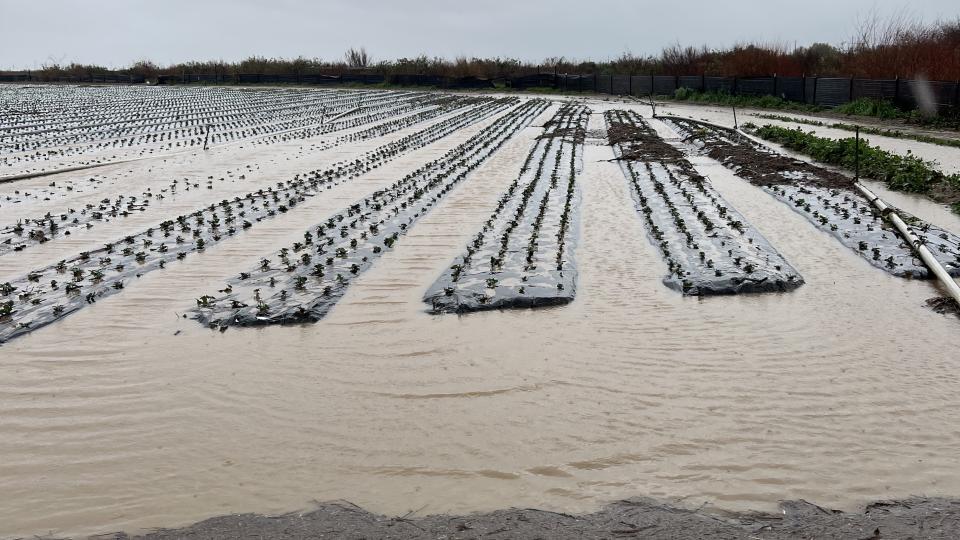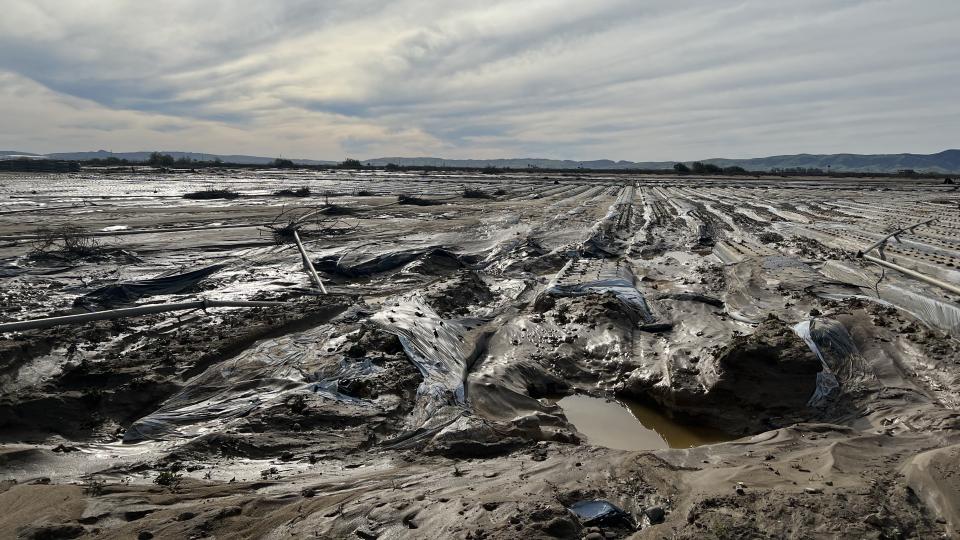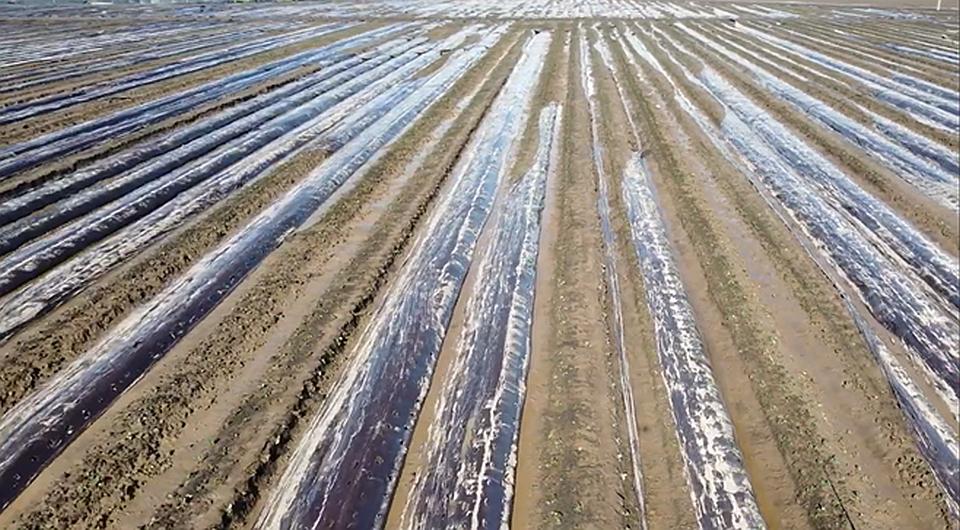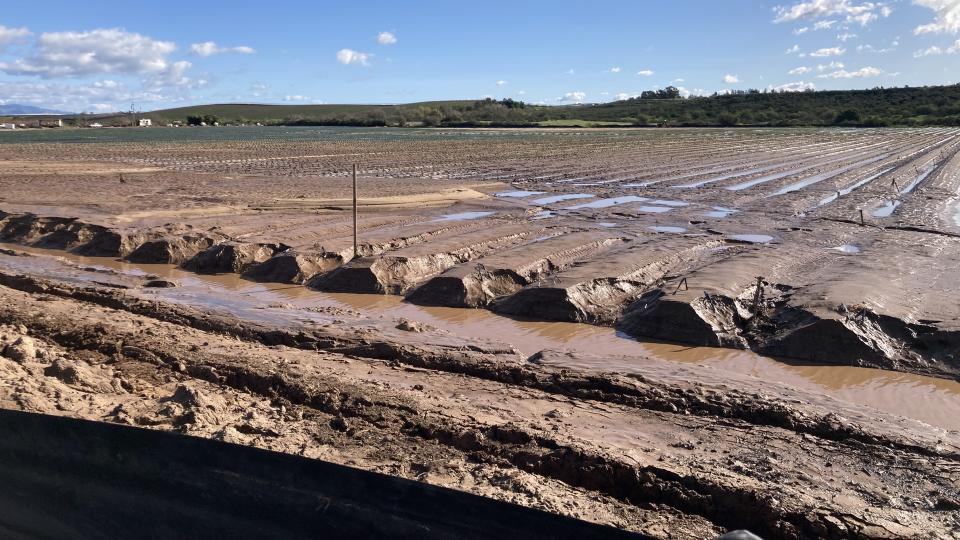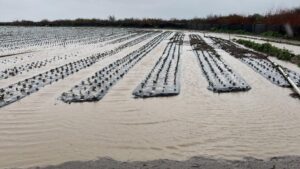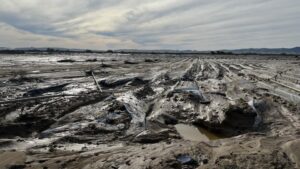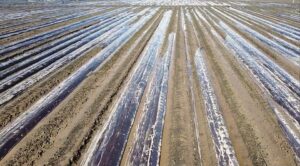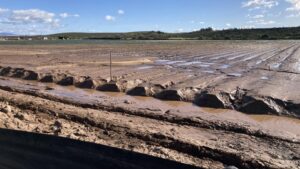Strawberry Growers in California Count up Damages After Series of Wild Storms
From Ventura County in Southern California, north through San Luis Obispo and Santa Barbara counties, to Monterey and Santa Cruz counties, the onslaught of rain, wind, and floods from recent atmospheric river events are approaching $200 million in potential damages to California’s strawberry farms, according to the California Strawberry Commission.
The damage estimates are preliminary, and all farmers have been asked to report damage directly to each county. Local weather forecasters estimated an average of 11 inches of rain fell across California over a three-week period due to the series of potent storms.
While the majority of family farmers are currently cleaning up minor storm damage, some farms have experienced catastrophic conditions. Erosion has washed away an estimated 350 acres. Another 1,490 acres are awaiting flood waters to recede. In total, 1,840 acres face catastrophic losses that could reach $200 million from crop, property, and equipment damage.
The farms at risk for catastrophic losses are as follows:
• Santa Cruz and North Monterey counties (Pajaro River) – 573 acres
• Monterey County (Salinas River) – 467 acres
• Santa Barbara and San Luis Obispo counties (Santa Maria River) – 500 acres
• Ventura County – 300 acres
While the economic impact is significant, most strawberry farmers experienced minor storm damage.
“We were fortunate that these storms came at a time when most farms are dormant and thus farm worker jobs have had minimum impact,” says Rick Tomlinson, California Strawberry Commission President. “We are thankful to the farm workers who have come back to work to help with the recovery.”
For the majority of the 31,852 strawberry acres in California that experienced minimal damage, the rain is a welcome change from what has been a years-long drought.
“The rain washes the soil and improves plant health,” Tomlinson adds. “As soon as we get a few weeks of sun, the strawberry plants should recover in time to start harvest in the spring. With improved soil health from the rains, we should have a good season.




